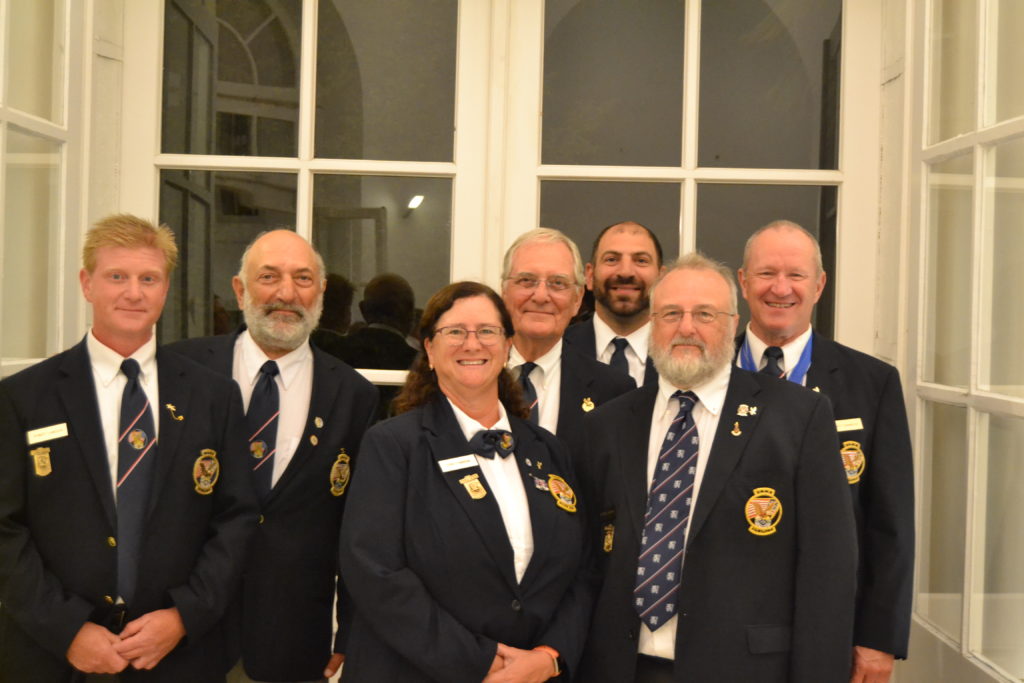Americans Bring Home Gold from the 28th World Muzzleloading Championships
For the third consecutive time, in a world championship, U.S. shooter George “Dunc” Dawkins of Ryland Heights, KY, took first place in a match for original free percussion lock shotguns for the U.S. International Muzzle Loading Team (USIMLT) at the 28th World Championship of the Muzzle Loaders Associations International Confederation (MLAIC), in Eisenstadt, Austria, August 19-25, 2018.
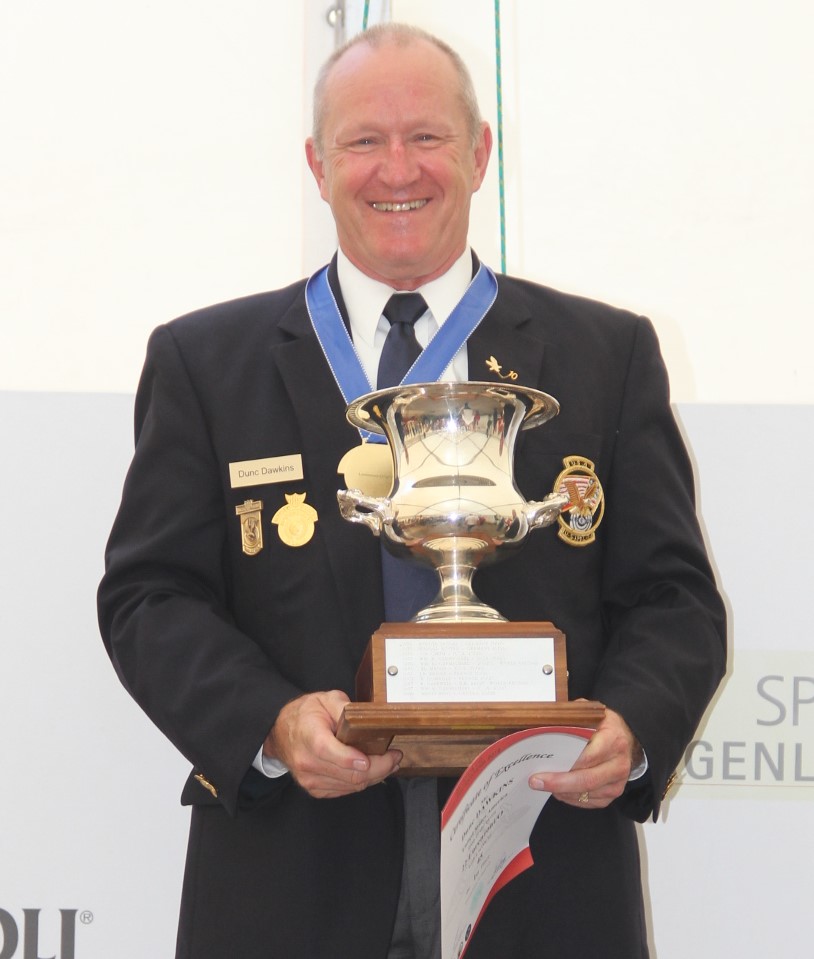
This World Championships saw about 395 competitors from 25 countries across Europe, the Americas, and around the world. The week-long event featured venues for pistol and rifle at 25, 50 and 100 meters and shotgun. The Short-Range World’s match occurs in even-numbered years.
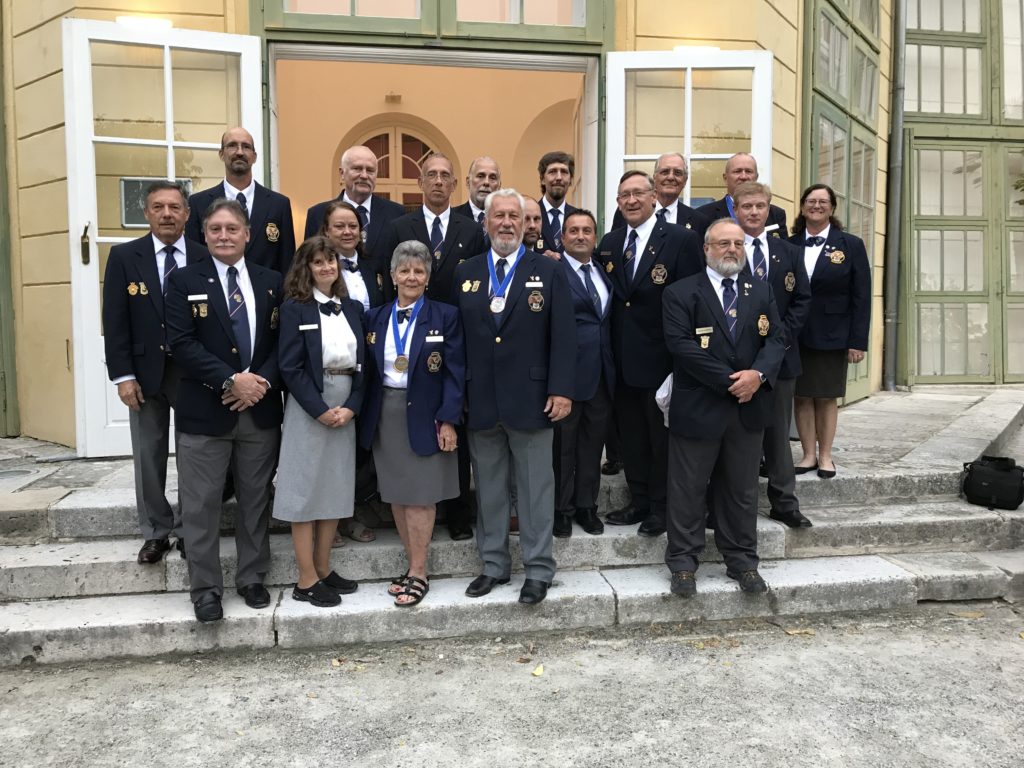
Dawkins Pulls a Hat Trick
“After my second round of 25 birds, I had a score of 24. All I knew was that Jane Capewell of Great Britain (the World Record holder in this event with score of 49) was one bird behind me going into the second round. In the second round I missed four birds, and thought I had blown it. As it turned out, she dropped the same number I did and remained one bird behind,” Dawkins said.
The reason I dropped those four birds was that I wasn’t into my game mentally. Instead of going out there and doing my mental regimen, I only did part of it. I was simply trying to be too careful, he said, adding “It’s a mental game, there’s a lot physical mechanics, positioning yourself, knowing where to break the shot to take be best advantage of your shot pattern, all of that. If you don’t have all of your thoughts in order, your mental game won’t be right.”
When did he find out he had won? “I had gone [to Austria] with the objective to win again, and I thought I had blown it. Four or five minutes after it was over, I learned I’d won. I went from a low to a high! When I stood at the awards ceremony with the American flag above me and they played our national anthem, I was on cloud nine,” he said.
The 50-bird match is shot in two 25-shot separate rounds, one in the morning and one in the afternoon of the same day on different ranges. Each round is shot over five stands in a 60 minute relay.
Pistol: Mike McDaniel
USIMLT team mates Mike McDaniel of California, MD (yes, it’s a town named California) and Todd Wenzel of Garner, NC shot identical scores of 81 to take gold and silver medals in the 50 meter revolver event, called the Malson. Tie scores are resolved by counting the number of 10s, 9s, etc. that the shooters have.
“It was the culmination of long, patient, disciplined and loving practice to realize a lifetime dream. I earned a spot on the U.S. team in 1996,” said McDaniel. Over the years, he was a member of several winning team events, but the 1st place individual gold medal had eluded him.
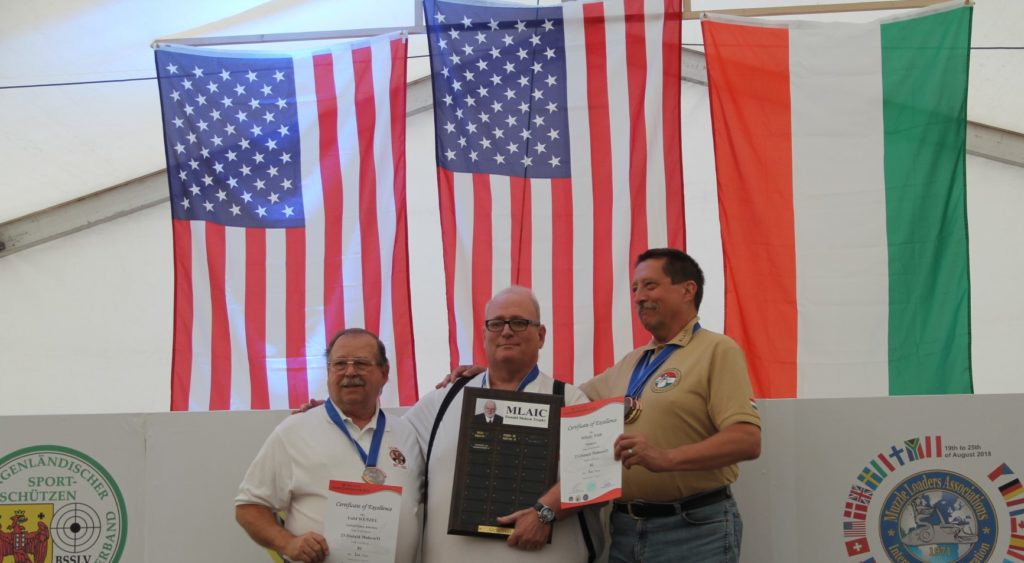
“When I finished shooting, I thought I had only a 75 and was not pleased. When I went to look at the score postings, it was an 81…people came up to shake my hand!”
Mike also took home the gold medal for his aggregate score of 173, combining his 92 in the 25 meter revolver match with his 81 in the 50 meter match. Todd Wenzel took 4th place honors in the same aggregate with a 168 combining his 25 meter score of 87 with his 50 meter score of 81.
Mike’s gun is an original 1858 Remington. “Shooting these guns, especially originals…they’re cranky, you need to learn the craft AND the gun. It’s a bit like a dancing partner, you need to learn their quirks and how to lead them,” McDaniel says.
Todd Wenzel
Todd Wenzel, like McDaniel, was also a bit surprised by his winning a silver medal. Actually, for the original category, scores are usually an 83 or an 84. When I found I placed with an 81, I really didn’t believe it, he said.
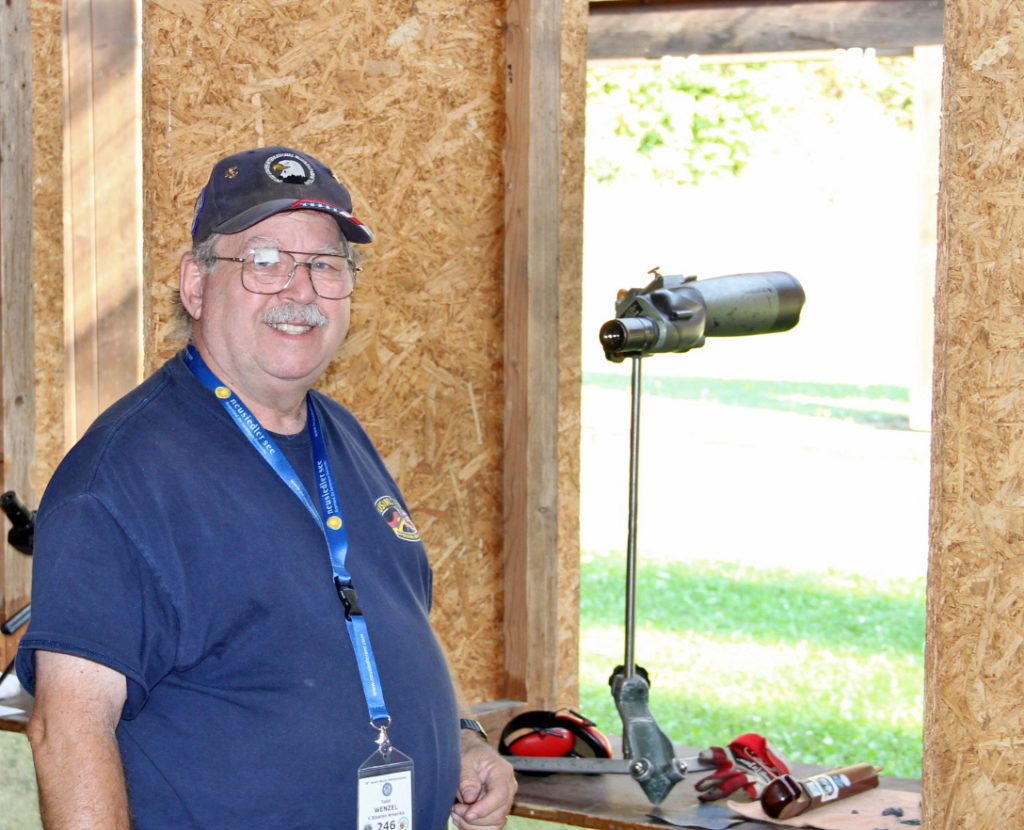
“When the forecast said the weather was going to be a bit cooler than normal,” Wenzel said, adding, “I put on a sweat shirt and was comfortable. Most people were still dressed for hot weather, and I think they got a shock that morning as it was cold and uncomfortable to shoot.”
We’d been practicing before the matches started on the lower range. When we moved to the upper range for the actual match, my zero changed, and my first shots were close to each other, but below the black. (Matches do not have sighters. Instead, 13 shots are fired and the best 10 counted for record.) I was able to come up and able to put them in the nine ring, I just moved to another hold and it was a good one. Any shot that I called as “good” was a nine, an eight just touching the nine line, or a 10, Wenzel said.
Before the match, I spoke to another teammate who had trouble getting his group up, and didn’t do well. That gave me added motivation and made me feel that I had to step up for the team. This is such a mental sport, his not doing well gave me the extra kick I needed, Wenzel added.
Seeking Excitement and a Challenge
What got him into this kind of shooting? He had been shooting competitively since he was 10, and started with a .22 rifle. In the Army he shot service rifle on the Army Team, and service pistol in the reserve. He became a Distinguished Expert in service pistol and rifle, but his enthusiasm was gone, and he needed something to be excited about again, he said. Muzzle loading was just another facet of shooting that became a challenge. That got him into the N-SSA, and he joined the 66th North Carolina Regiment, Company C.
“For me to do better, I need to shoot against better shooters, so that’s why I got into international competition with the USIMLT. The World’s championship is another step up, a higher level,” Wenzel said.
The Malson match, as all of the other pistol and rifle events, is shot on the 25 and 50 meter B17 international pistol target (most Americans think of it as the one used for Free Pistol), which is very challenging, especially with 160 year-old cap and ball revolvers.
